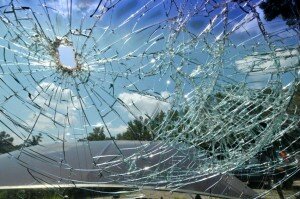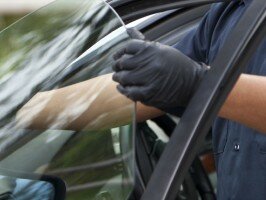Anyone who has an automobile knows that auto glass helps protect them from the elements while on the road. Between the need for dirt to be stopped, wind to be blocked and rain to be halted, the laminated glass of your windshield has several purposes that we often take for granted. In the past, windshields were made of less durable material and often prone to breaking under even minor circumstances. As time wore on, however, advancements allowed for glass to be reinforced, injected with technology and given new responsibilities in how it integrates with an automobile.
Whether you have bought a used car recently or need to replace one or more windows on an existing car, there is a chance that you have had issue or may have an issue with the auto glass in your vehicle. A variety of common mistakes are made by drivers, owners and repairmen alike, so it’s important to keep a vigilant eye out for any issues or potential problems. In the following article, we’ll discuss the most common mistakes in auto glass repair so that you can be prepared to spot them and tackle them before they become a bigger ordeal.
Self-Repairs
With a variety of products for your auto glass on the market, it comes as no surprise that you may head down to the auto parts store in search of a solution for a crack or chip in the windshield. One type of product – windshield DIY repair kits – has made inward roads in recent years as the eocnomy weakened and more people sought less expensive solutions to their auto glass woes. This type of repair kit usually consists of a resin, a few special tools to guide the resin into the crack and instructions on how to finish the process.
Watch it on YouTube! >>
Unfortunately, these rather inexpensive kits consist of two flaws. The first is that the resin and other parts used in the repair process are inferior to the parts used by a real auto glass technician; you cannot expect the same quality repair as a result. The second issue is that most people who use these have no idea how to repair a piece of auto glass or a windshield! Just because there is a kit for it doesn’t mean that a consumer should try to repair the damage his or herself. While we commend those who attempt to address the issue on their own, it is ultimately something that must be done by an auto glass technician. Just like car windows in some locations now require climate control systems, there are also a variety of potential tech-related elements embedded in your windshield – be careful!
Delaying Repairs
When a crack, chip or scratch strikes, we want to resolve the  problem as soon as possible – but money and time always play roles in the process. Most auto insurance companies cover repairs to your auto glass and windshield, but the repairs can take up to one hour before the car is once again ready to be driven. Because of this, even if coverage is there for the driver, many times he or she will put off the repairs in the hopes that they’ll have free time later on in life. Others decide that without full-coverage or auto glass repair coverage, they simply can’t afford the repairs.
problem as soon as possible – but money and time always play roles in the process. Most auto insurance companies cover repairs to your auto glass and windshield, but the repairs can take up to one hour before the car is once again ready to be driven. Because of this, even if coverage is there for the driver, many times he or she will put off the repairs in the hopes that they’ll have free time later on in life. Others decide that without full-coverage or auto glass repair coverage, they simply can’t afford the repairs.
Unfortunately, small cracks and chips can turn into much bigger problems when left in this condition. With consistent driving, it can sometimes only take one to two weeks for a small crack or chip to morph into an unrepairable piece of damage. If you put off the repairs, then you’re likely to have damage so severe that the windshield requires replacement in the future. With this in mind, it’s important to consider the facts and understand that auto glass repair must be handled in a prompt fashion.
Parking in Unprotected Spaces
The final mistake on our list that many auto owners make is parking in unprotected spaces – whether that be at home, at work or else where. For starters, more than one hundred thousands car burglaries occur each year, with broken glass being a problem in over half of them. Whenever you park your car unattended, in dark spaces or otherwise leave it unprotected, you increase the risk of this likelihood. Of course, car burglaries are not the only problem involving this scenario that you might face.
There is also the risk of inclement weather that comes with parking in dumb locations. Even when we are at home, a car parked in an uncovered area can be subjected to rain, sleet, hail, tree branches and other materials that become commonplace in a variety of different storms and weather fronts. The best way to prevent this is to park in a garage, use a carport on your property or otherwise shield your vehicle from the effects of potential inclement weather.
